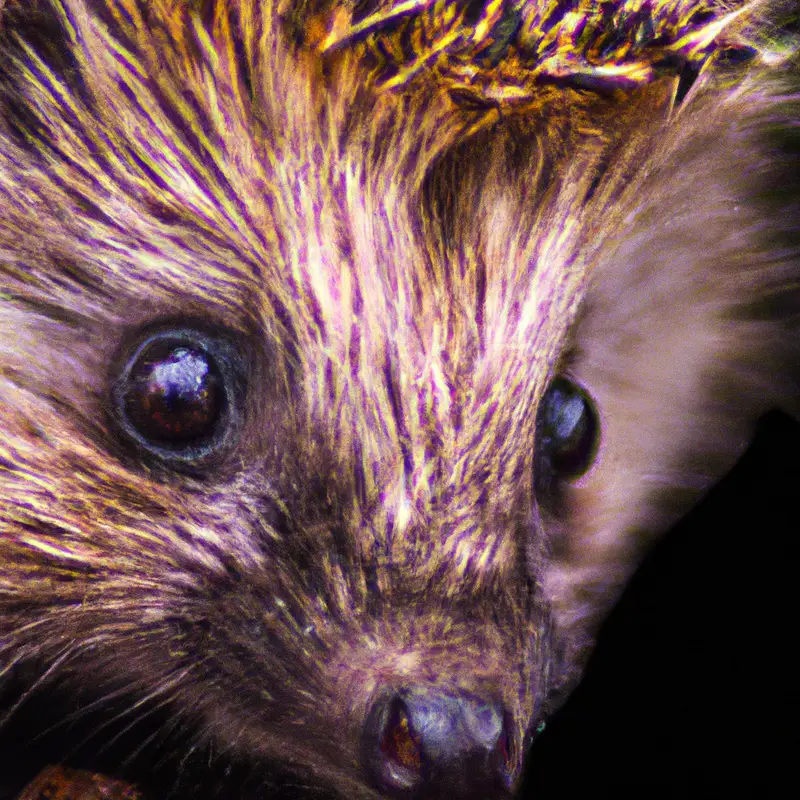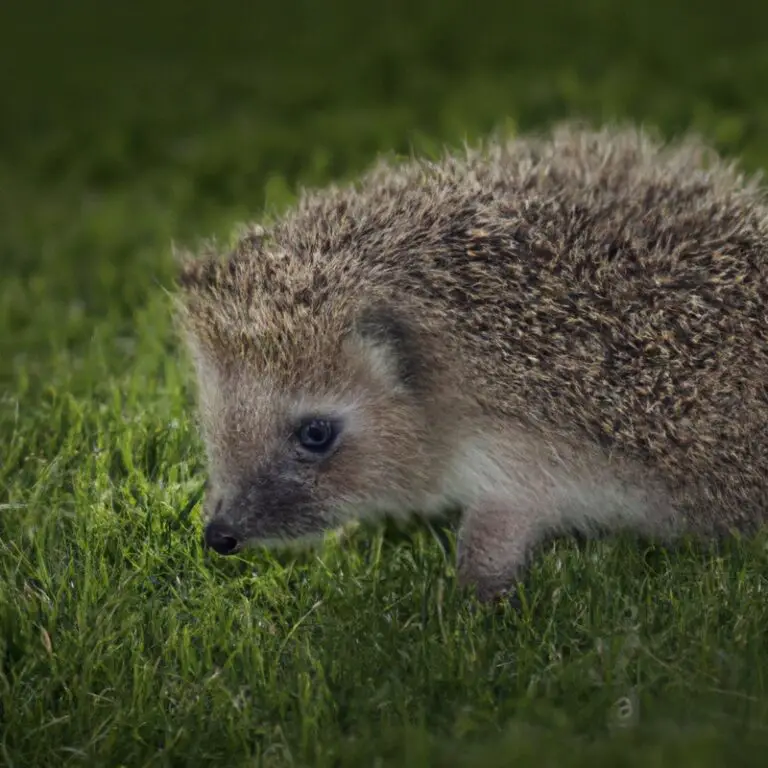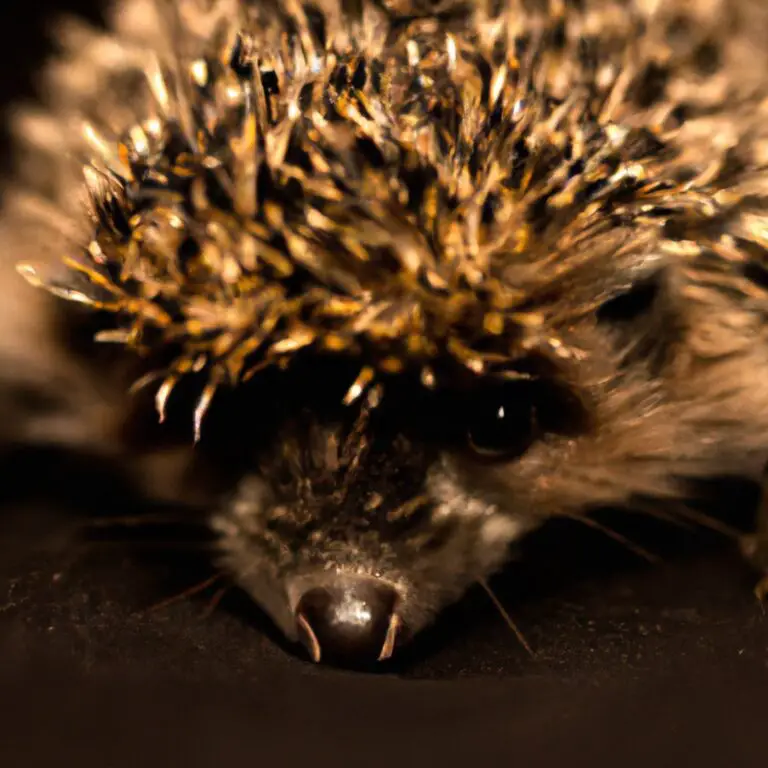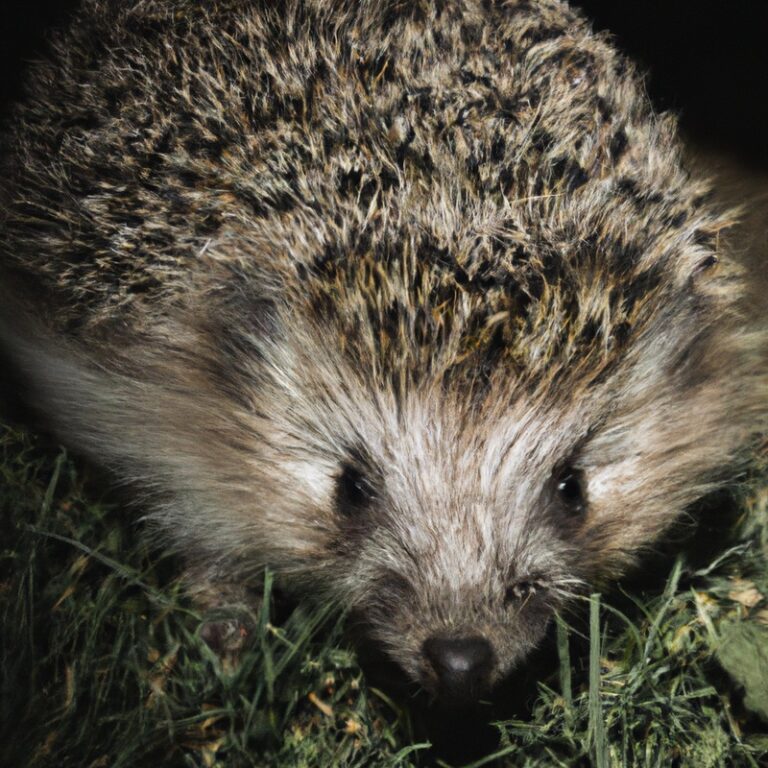How To Identify Hedgehog Droppings?
Key Takeaways:
- Hedgehog droppings are typically dark brown or black in color and have a cylindrical shape with tapered ends.
- The size of hedgehog droppings is relatively small, usually around 1-2 cm in length.
- Look for the presence of insect exoskeletons or berry seeds in the droppings, as hedgehogs have a diverse diet.
- When identifying hedgehog droppings, be cautious of confusing them with those of other small mammals like rats or mice.
Are you curious to know if hedgehogs have paid a visit to your backyard? Well, one telltale sign of their presence is their droppings.
But how can you be sure if those pellets you found belong to a hedgehog?
In this article, we’ll explore the characteristics of hedgehog droppings, where to find them, and how to differentiate them from other animal droppings. By learning how to identify hedgehog droppings, you’ll not only satisfy your curiosity but also contribute to conservation efforts.
So, let’s dive in and become experts in recognizing these tiny treasures left behind by our spiky friends!
| Appearance | Characteristics |
| Shape | Small and cylindrical |
| Color | Dark brown or black |
| Texture | Dry and crumbly |
| Size | Approximately 1-2 cm in length |
Why identify hedgehog droppings?
Identifying hedgehog droppings is key to determining their presence in an area and aiding conservation efforts.
The role of hedgehog droppings in identifying hedgehog presence
Hedgehog droppings play a vital role in identifying hedgehog presence. By examining their droppings, you can determine whether hedgehogs are in your area.
Hedgehog droppings are usually dark brown or black in color, cylindrical in shape, and about 1-2 cm long.
They often contain remains of their diet, such as insects and undigested plant material. By keeping an eye out for these telltale signs, you can easily identify if hedgehogs are living nearby.
Remember, it’s important to respect their habitat and provide a safe environment for these adorable creatures.
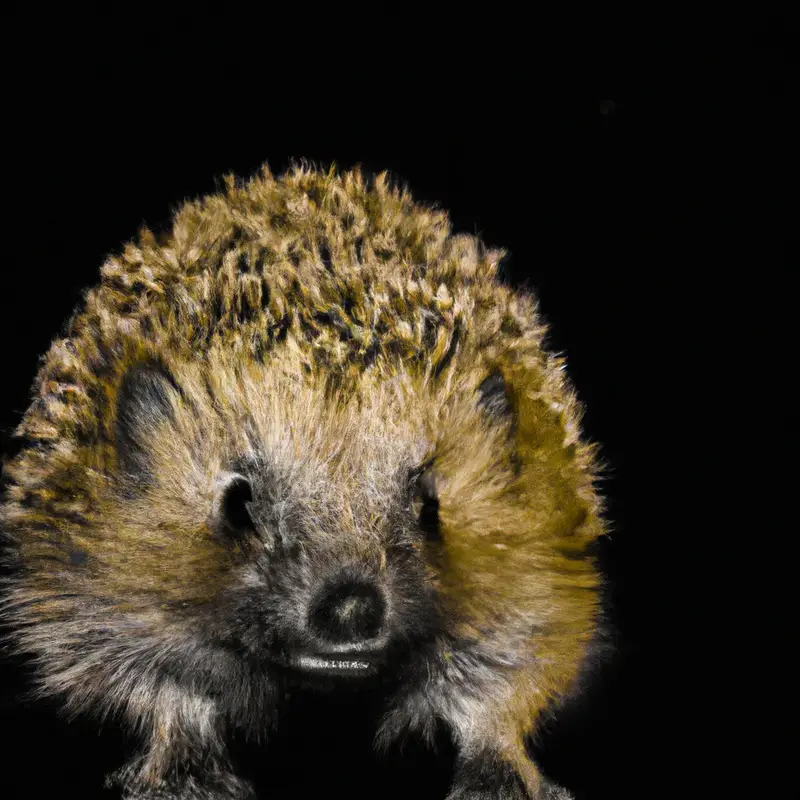
Understanding the importance of identifying hedgehog droppings for conservation efforts
Identifying hedgehog droppings is important for conservation efforts.
By studying their droppings, researchers can gain valuable insights into hedgehog populations and their habitats.
Droppings help determine the presence of hedgehogs in an area, their diet, and overall health.
This information aids in understanding population dynamics, monitoring endangered species, and implementing effective conservation strategies.
So, the ability to identify hedgehog droppings plays a significant role in protecting these adorable creatures and preserving their habitats.

Characteristics of hedgehog droppings
Hedgehog droppings can be identified by their size, shape, and texture.
Additionally, variations in color and consistency can also be observed.
Size, shape, and texture of hedgehog droppings
Hedgehog droppings are typically small and cylindrical in shape, similar to small sausages. They often have tapered ends and are around 1-2 inches in length.
The texture can vary depending on the hedgehog’s diet, but they are usually firm and dry.
Hedgehog droppings can be brown or dark in color and may contain visible bits of indigestible food, like insect exoskeletons or plant fibers. By examining the size, shape, and texture of hedgehog droppings, you can easily identify them.
Color and consistency variations in hedgehog droppings
Hedgehog droppings can vary in color and consistency.
The color of their droppings can range from dark brown to black, depending on their diet.
Consistency can also vary, with some droppings being firm and others appearing more soft and moist.
It’s important to note that while examining droppings can give insight into a hedgehog’s health, it’s always best to seek advice from a wildlife expert if you have any concerns.
Where to find hedgehog droppings
To find hedgehog droppings, check in their preferred habitats and common areas where they leave signs of their presence.
Preferred habitats of hedgehogs for finding their droppings
Hedgehogs tend to prefer habitats with an abundant supply of insects, vegetation, and cover, which allows them to find food and shelter easily. You can often find their droppings in areas such as woodlands, hedgerows, and gardens with shrubs and dense undergrowth.
Look for small, cylindrical droppings that are dark brown or black in color, usually around 1-2 centimeters in length.
Remember to respect their habitat and avoid disturbing them.
Common areas and signs to look for hedgehog droppings
Hedgehog droppings can be found in various areas, giving you clues of their presence.
Here are some common signs to look for:
- Gardens and lawns: Check for small, cylindrical droppings in these areas, particularly near bushes, under low-lying vegetation, or next to trees.
- Pathways and walkways: Hedgehogs often leave droppings along their travel routes, so keep an eye out for their distinctive droppings on paths and walkways.
- Compost bins and under sheds: Hedgehogs are known to make nests in these areas, and you may find their droppings nearby.
- Identifying features: Hedgehog droppings are usually dark brown or black in color, shaped like small cylinders, and about the size of a small grape. They often contain undigested food such as insect exoskeletons or seeds.
Remember, if you do come across hedgehog droppings, it’s a great sign that these fascinating creatures have been visiting your area!
Differentiating hedgehog droppings from other animal droppings
Hedgehog droppings can be distinguished from other animal droppings by their distinct shape and size.
Identifying features of hedgehog droppings compared to other small mammal droppings
Hedgehog droppings can be distinguished from other small mammal droppings by their unique features.
Firstly, hedgehog droppings are usually cylindrical in shape, resembling small brown tubes.
Secondly, they have a distinct odor, which is often described as earthy or musky.
Thirdly, hedgehog droppings may contain undigested food items, such as bits of insects or plant material.
Lastly, they tend to be slightly shiny due to the presence of uric acid.
By keeping these features in mind, you can easily identify hedgehog droppings and differentiate them from those of other small mammals.
Identifying hedgehog droppings through visual cues
To identify hedgehog droppings, look for specific visual cues that indicate their presence.
Detailed description of hedgehog droppings’ appearance
Hedgehog droppings are small, cylindrical, and brown or black in color.
They typically have a tubular shape, with one end pointed and the other end rounded.
The droppings usually measure around 1-2 cm in length and have a diameter of approximately 5-10 mm.
They often contain undigested insect parts and may have a slightly musky odor.
When fresh, hedgehog droppings are moist and shiny, but they may become dry and crumbly over time.
Keep an eye out for these distinctive features when trying to identify hedgehog droppings in your garden or outdoor space.
How to spot specific features that indicate hedgehog presence
To spot specific features that indicate hedgehog presence, look for the following signs:
- Droppings: Hedgehog droppings are dark brown or black, cylindrical in shape, and around 1-2 cm in length. They often contain bits of insects and berry seeds.
- Footprints: Hedgehog footprints have five toes on the front and hind feet, leaving distinctive prints with visible claws.
- Quill scatterings: Hedgehogs shed quills, which you may find scattered around their favorite spots, like gardens or feeding areas.
- Disturbances in soil or vegetation: Hedgehogs may leave behind signs of digging, upturned soil, or flattened grass as they search for food.
- Nests or hibernation sites: Hedgehogs build nests using vegetation and leaves, often found in quiet corners or under sheds and piles of wood.
Remember, it’s essential not to disturb hedgehogs if you suspect their presence. Instead, observe these features from a distance and create a safe environment for them in your garden.
Identifying hedgehog droppings through odor
Hedgehog droppings have a distinct smell that can help you identify them.
Recognizing the distinct smell of hedgehog droppings
Hedgehog droppings have a unique smell that can help you identify them.
The distinct odor is often described as musky or earthy, similar to a combination of wet leaves and dirt.
It may also have a slightly sweet or sour scent.
If you come across small droppings with this particular smell in your garden or outdoor area, it’s likely that a hedgehog has been visiting.
Remember to handle droppings with gloves and wash your hands thoroughly after handling them.
Differentiating hedgehog scent from other animals
Hedgehog scent is distinctive and can be differentiated from other animals’ droppings by its strong, musky odor. Unlike other animals, hedgehog droppings have a distinct smell that is often described as similar to ammonia or rotten eggs.
Additionally, hedgehog droppings are cylindrical in shape, about the size of a small pea, and are usually dark brown or black in color.
This combination of scent and appearance makes it fairly easy to identify hedgehog droppings from those of other animals.
Safety precautions while handling hedgehog droppings
To handle hedgehog droppings safely, always wear gloves and protective gear.
Dispose of the droppings properly to minimize any potential health risks.
Importance of wearing gloves and protective gear
When handling hedgehog droppings, it is important to wear gloves and protective gear. This is because hedgehog droppings may contain bacteria and parasites that can be harmful to humans.
Wearing gloves and protective gear helps to minimize direct contact with the droppings and reduces the risk of infection or contamination.
Additionally, it is advisable to properly dispose of the gloves and wash your hands thoroughly after handling hedgehog droppings to ensure proper hygiene.
Proper disposal methods for hedgehog droppings
When it comes to disposing of hedgehog droppings, there are a few proper methods you can follow. Firstly, it’s important to wear gloves and use a shovel or scooper to collect the droppings.
Avoid touching them directly to minimize the risk of bacteria or parasites.
Secondly, place the collected droppings in a sealed plastic bag to prevent any further contamination. Finally, dispose of the bag in a garbage bin or an outdoor waste disposal area.
It’s essential to properly dispose of hedgehog droppings to maintain hygiene and prevent any health risks.
Frequently Asked Questions (FAQs)
Can hedgehog droppings carry diseases?
Hedgehog droppings can carry diseases, so it’s important to handle them with caution. These droppings may contain parasites, such as fleas, ticks, or worms, which can transmit infections to humans.
To minimize the risk, avoid direct contact with the droppings and always wear gloves when cleaning them up.
Proper hygiene, such as washing hands thoroughly afterwards, is also essential. If you suspect any diseases or health issues after handling hedgehog droppings, consult a healthcare professional for advice.
Stay safe and take necessary precautions when dealing with wildlife droppings.
What can I do if I find hedgehog droppings in my garden?
If you find hedgehog droppings in your garden, there are a few things you can do:
- Leave them be: Hedgehog droppings are a sign that these prickly creatures have visited your garden. If you have a hedgehog-friendly garden, consider leaving the droppings as they are. Hedgehogs play an important role in pest control and can help keep your garden free from slugs and snails.
- Provide shelter and food: If you want to attract and support hedgehogs in your garden, create a hedgehog-friendly environment. Set up a hedgehog house or provide a pile of leaves or logs for them to nest in. Also, leave out food and water, such as wet cat food or a bowl of water, to help hedgehogs thrive.
- Watch out for hedgehogs: If you spot hedgehog droppings, it’s a sign that hedgehogs are frequenting your garden. Take the time to observe them at dusk or dawn when they are most active. But do so from a distance to avoid disturbing them.
Remember, hedgehogs are protected animals, so it’s important to offer them a safe and welcoming environment in your garden.
How often do hedgehogs defecate?
Hedgehogs typically defecate once or twice a day. Their droppings are small, brown, and cylindrical in shape.
Keep an eye out for these droppings in your garden or yard to check if hedgehogs have been visiting.
They can be a sign that these adorable creatures are nearby!
Final Verdict
Identifying hedgehog droppings can provide valuable insights into the presence and habits of hedgehogs, supporting conservation efforts and promoting their well-being.
Understanding the characteristics and visual cues of hedgehog droppings, as well as their distinct odor, can help differentiate them from other animal droppings.
By knowing where to find hedgehog droppings and taking necessary safety precautions while handling them, individuals can contribute to the protection and conservation of hedgehogs.
Remember, being able to identify hedgehog droppings is not only informative but also plays a crucial role in fostering a harmonious coexistence with these fascinating creatures.

